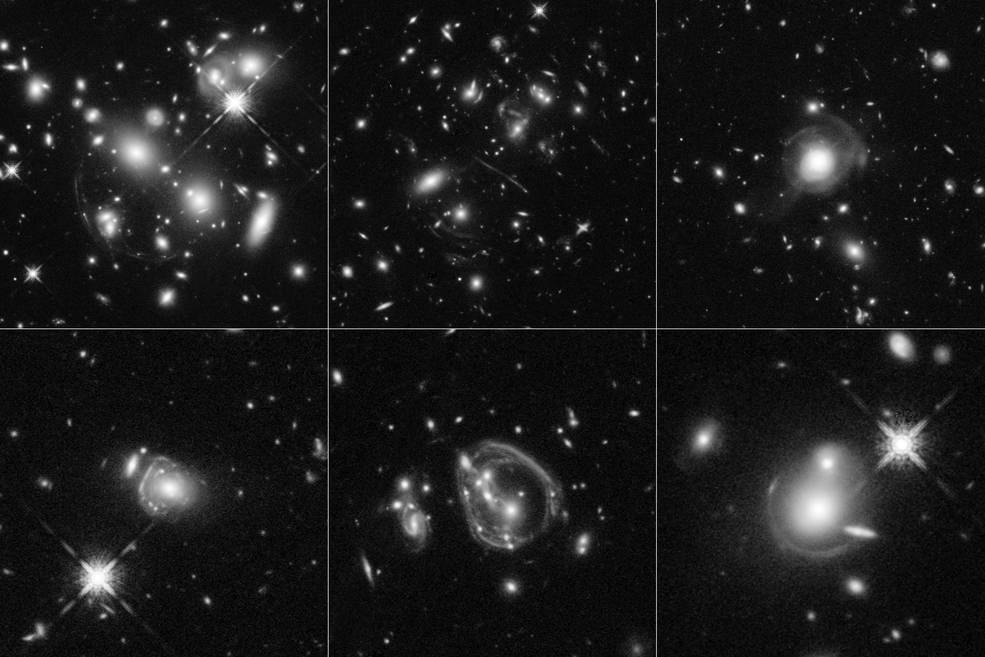Boosted by natural magnifying lenses in space, NASA’s Hubble Space Telescope has captured unique close-up views of the universe’s brightest infrared galaxies, which are as much as 10,000 times more luminous than our Milky Way.
The galaxy images, magnified through a phenomenon called gravitational lensing, reveal a tangled web of misshapen objects punctuated by exotic patterns such as rings and arcs. The odd shapes are due largely to the foreground lensing galaxies’ powerful gravity distorting the images of the background galaxies. The unusual forms also may have been produced by spectacular collisions between distant, massive galaxies in a sort of cosmic demolition derby.
“We have hit the jackpot of gravitational lenses,” said lead researcher James Lowenthal of Smith College in Northampton, Massachusetts. “These ultra-luminous, massive, starburst galaxies are very rare. Gravitational lensing magnifies them so that you can see small details that otherwise are unimaginable. We can see features as small as about 100 light-years or less across. We want to understand what’s powering these monsters, and gravitational lensing allows us to study them in greater detail.”



